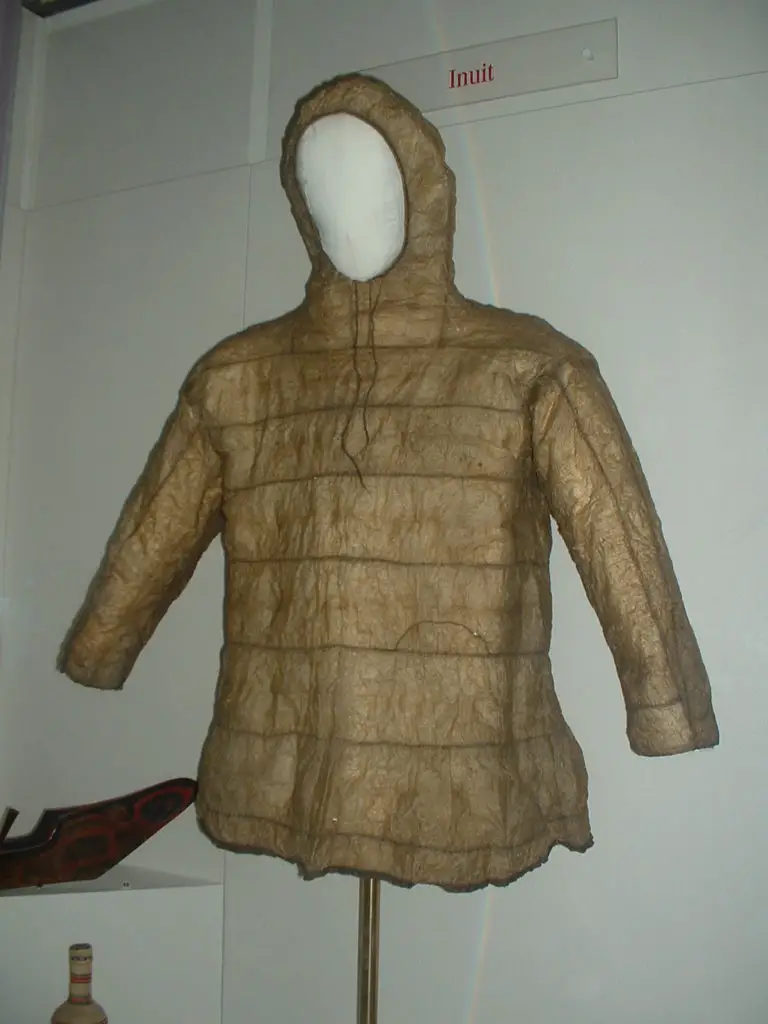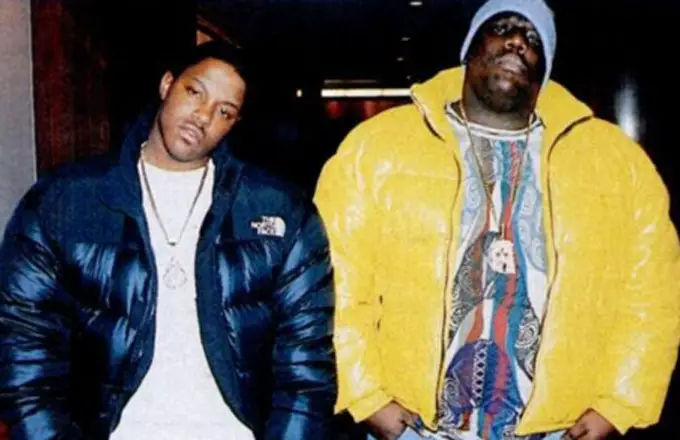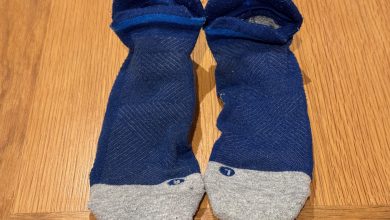History of Down Jackets: From Innuit to Catwalk

Continuing our ‘what is a down jacket‘ series, it’s time to explore the history of down clothing. The 1922 summit of Mount Everest by an Australian team is the first acknowledged use of a down jacket. But the evolution of down jackets, and their predecessors, is rooted deep in the history of mankind.
Use of down goes way back in time. North American tribes have been using bird feathers as part of religious ceremonies that date back thousands of years. Images of native American war bonnets (headdresses made with eagle feathers) show us of the importance placed on birds and their integration into various cultures.
Caribou Innuit, inhabitants of the North West Territories, Canada have used down-stuff parkas for countless generations. The heavy overcoats were designed to keep hunters warm during the harshest weather. Tracing the origins of the parka is hard, but researchers believe that this form of cold weather clothing has been used by the Innuit for many thousands of years.
More recently, from the 1600s onwards, down feather became a key component in the construction of clothing worn in cold environments. In this era, Dutch merchants were regularly buying down feathers from Russia.
Fast forward another couple of hundred years and we can see examples of duck nesting sites in Norway being protected. Eider was harvested by Norwegian communities and stuffed into both clothing and blankets. This method of farming, thought to date back to the 1800’s, appears to be an early form of mass supply of eider.
Down Jackets: George Finch’s Dayglo Life Savers
George Finch, an Australian chemist, is acknowledged as the father of the modern down clothing industry (and the first step on our tour of the history of down jackets). Although eider has been in use as a decoration on clothing and hats, his use of the material was key in helping one of the first attempts on Mount Everest.
A scientist and keen mountaineer, Finch’s early successes included his skill in bomb-making in World War I. For his services to cause he was awarded and MBE (Member of the British Empire).
Finch is not only known for his work on crafting clothes that would protect climbers from the deadly cold temperatures at the peak of Everest. He was also the first person to propose using bottled oxygen as a way of preventing oxygen starvation at extreme altitudes.
Originally called an ‘eiderdown coat’ by Finch, the puffer jacket he invented wouldn’t look out of place in the early 1980s. Bright green in colour and made from billowing balloon silk, the jacket was easily seen on the white slopes and peaks of the mountains.
Many explorers and climbers of that era, including George Mallory who died near the peak of Everest, mocked Finch’s creation. Up until 1922, and for a number of years afters, climbers wrapped themselves in layers of wool and tweed. Like Mallory, many of them never returned from their climbs, their lives ended by exhaustion and cold.
Finch’s role in the development of outdoor gear was pivotal. Sir Edmund Hilary, the first man to reach Everest’s summit without oxygen, worked with the Australian scientist to manufacture clothing for the expedition.
Down Jackets Morph Into Puffer Jackets
Given the unsurprising life-persevering qualities of down, it remained one of the biggest open secrets in the world. Until the 1980s – enter the era of the puffer jacket.
What is a puffer jacket?
It’s not a new invention. The term puffer jacket was coined back in the 30’s, then made more popular after Princess Diana was seen wearing a puffed up down jacket whilst skiing.
The concept is simple: wind that penetrates a permeable shell creates a fluffing effect that makes the jacket swell, insulating the wearer further.
And so, thanks to British Royalty, the puffer jacket was revitalised.
A puffer jacket is nothing more than another way to describe a down jacket. Times move on and the phrase seems to be arcing towards the dustbin of phrases that have fallen from grace.
Note: Eddie Bauer, an outdoor enthusiast, is credited with inventing the puffer jacket back in 1936. The story goes that, after nearly succumbing to hypothermia on a fishing trip, he designed a new garment that would keep him warm, and alive, no future excursions.
The phrases ‘down jacket’ and ‘puffer jacket’ are interchangeable as they reference the same concept. Sorry Eddie, George Finch got there before you!
The 1980s Onwards: Down Jacket Revival
Following Princess Diana’s timely intervention, down-filled clothing became the fashion accessory of the century. Well, of the 80s. Money hungry clothing brands leapt onto the rollercoaster and proceeded to launch a slew of trendy, ‘must have’ down jackets for the fashionistas of the decade.
Sadly, most of these inventions were priced well above the reach of the average person. Down became the preserve of more affluent sections of society.

Notable amongst the companies that grasped the down nettle were:
- Berghaus
- Bergans of Norway (already in the market since the 1800s)
- Black Diamond
- Granite Gear
Prices could reach a heart stopping £1000 (currently about $1400+) By current standards, this figure might seem small, but they are from an era where wages were considerably lower than today.
Outdoor Gear Companies Finally Usurp the Trendy Pretenders
Renewed interest in hillwalking and hiking sparked in the 1990s. Weary from years of being reminded the world faced the constant threat of MAD (Mutually Assured Destruction), beards reclaimed the hills and trails of planet Earth. Reinvigorated, they demanded clothing that met the demands of the Great Outdoors, not the concrete routes of Peckham!
Like the brave 300, companies broke the phalanx of fashion houses on a bristling wall of down clothes. Unlike the 300, brands like Berghaus, Montane and others, prevailed. The beards had won, and eider was once again the preserve of the mountaineers and hikers.
Maybe I’m be economical with historical fact, but it’s a good story. The reality is pretty much true.
Fashion houses have continued to produce interesting and elegant designs that, whilst still warm, have no place in the world of mountaineering and expeditions. Would you really take something like this up K2?:

The Future of Down (Puffer) Jackets

Likewise, as long as there are beards like me to continue forging paths across hiking routes and going on extreme treks there will also be a home for the best down jacket money can buy.
Outdoor gear is a huge business. Keeping people alive is even bigger business and, for so long as there are expeditions to cold climates, down will have a part to play. At least for the foreseeable future.
Man-made fibres don’t yet match the properties of down. I’ve used a number of hollow fibre filled pieces of gear and each has a place on my packing list.
For example, for my ski to the North Pole I used a Red Fox sleeping bag packed with hollow fibre. The bag was incredibly warm and, unlike down, the insulating material did not absorb moisture (which could have led to fatal consequences). But the filling does not compress easily which meant the packed bag took up a lot of space.
There’s quite some way to go before man-made materials can match down for versatility. The history of down jackets is fascinating. I wonder how it will look in another 30 years.





One Comment